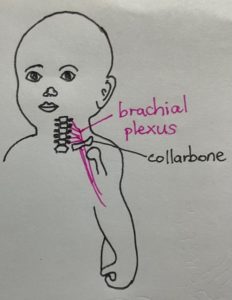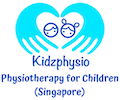Brachial Plexus / Erb's Palsy Treatment

(Diagram is not drawn to scale)
What is a Brachial Plexus Injury?
The brachial plexus is a network of nerves between the neck and shoulders. These nerves originate from the spinal cord in the neck, and control muscle function in the shoulder, arms, and hands, as well as sensation in the upper limbs.
Brachial Plexus injuries in newborn babies are usually caused by nerves of the brachial plexus being stretched, compressed, or torn in a difficult delivery. This could be due to a large baby relative to the mother’s pelvis. The baby's shoulder can become trapped against the mother’s pelvis after the head is out. To free the shoulder, the head must be tilted to the opposite side. This may stretch or tear the brachial plexus nerve fibers. The result might be a loss of muscle function, or even paralysis of the upper arm.
The part of the arm that is affected depends on the level of brachial plexus that is injured. Injuries to the upper brachial plexus (C5, C6) affect muscles of the shoulder and elbow. This is known as Erb's palsy, and is the most common brachial plexus injury in the newborn. Injuries to the lower brachial plexus (C7, T1) affect muscles of the forearm and hand.
How is brachial plexus injury diagnosed?
Brachial plexus birth injury is diagnosed by the baby’s paediatrician after a detailed medical history and physical examination. The baby presents with the arm turned in toward the body, and the baby cannot move the affected arm as effectively as the other arm. An xray may be done if the paediatrician suspects a fracture of the collarbone or arm.
How is brachial plexus injury treated?
Physiotherapy is recommended to help maximise the use of the affected arm and prevent stiffening of the muscles and joints. A physiotherapist specialised in paediatrics will teach parents exercises to prevent stiffness and muscle wasting of the arm. These exercises are important to keep the joints and muscles moving as normally as possible, and can help the child recover maximum function in the affected arm.
What is the long-term outlook for brachial plexus injury?
Most young children recover by 1 year old. Some may need nerve surgery or tendon transfers. The outcomes from these surgeries help with improved long-term function.
If you are concerned about your child's arm movements, please feel free to reach out to us for an assessment and for exercises to improve the mobility of his/her arms.
Let's get in touch
